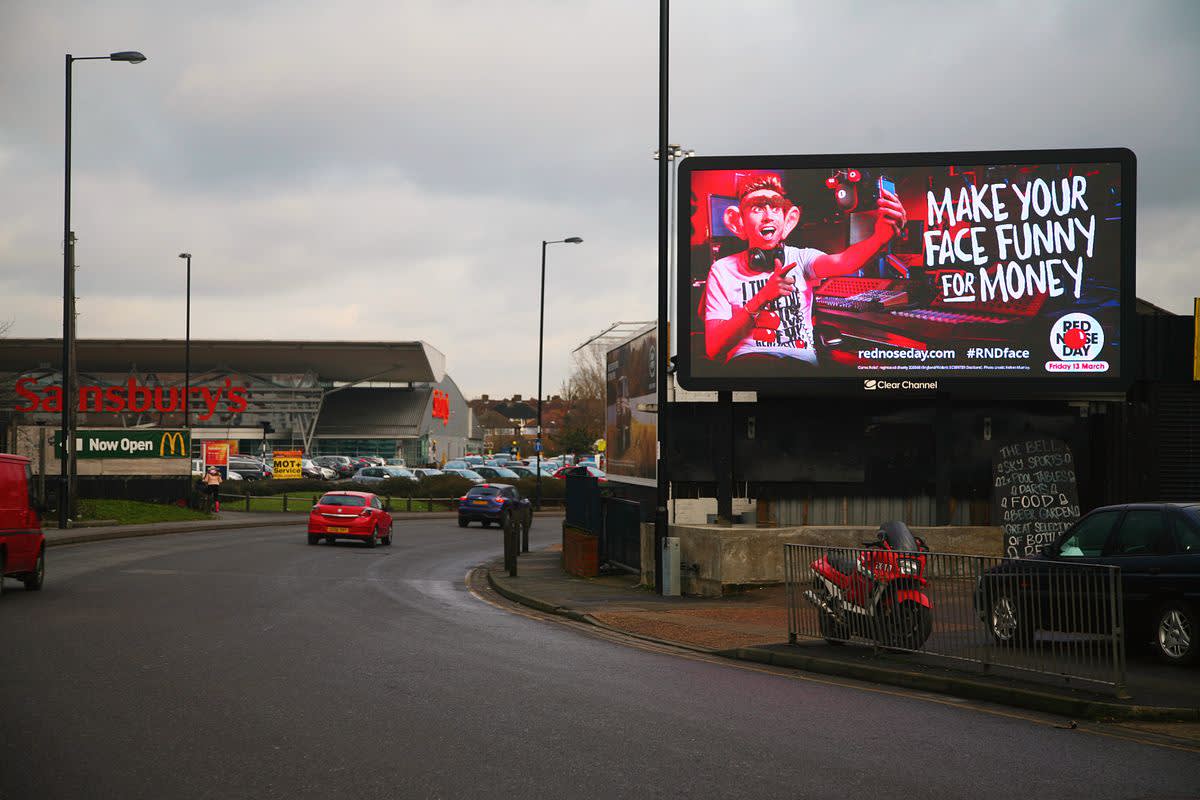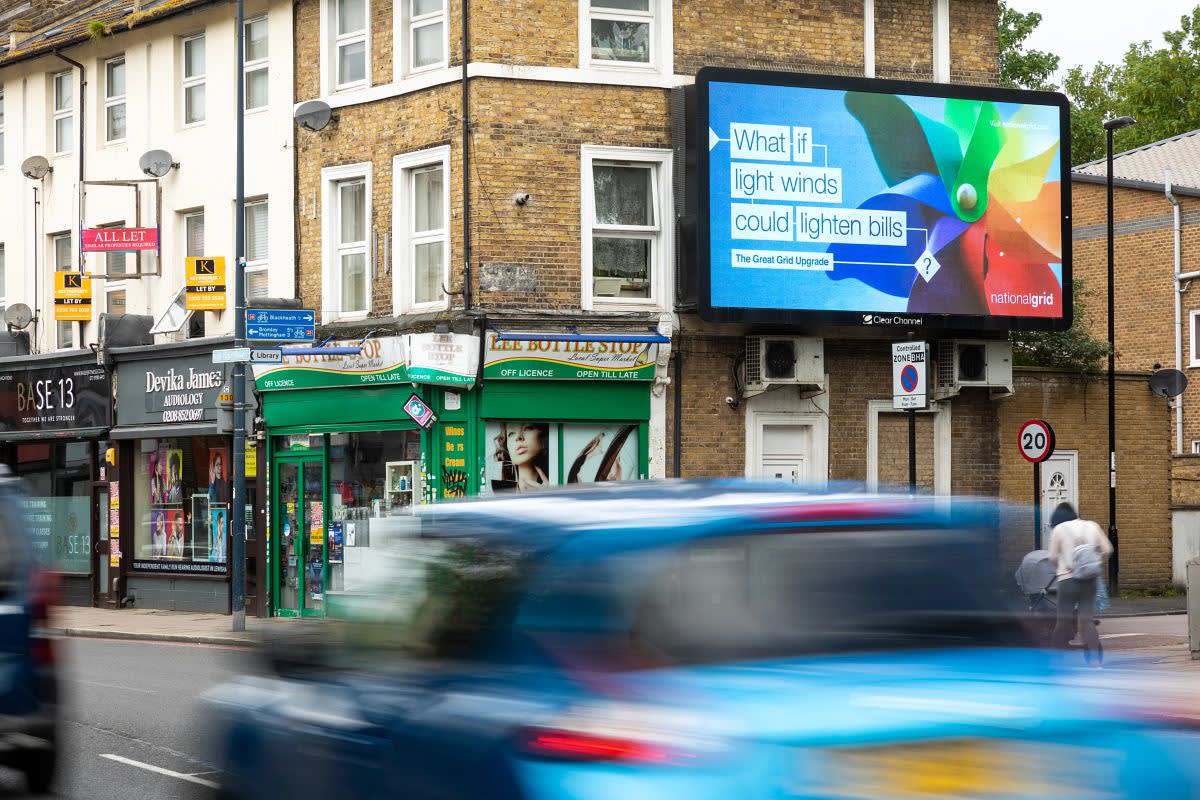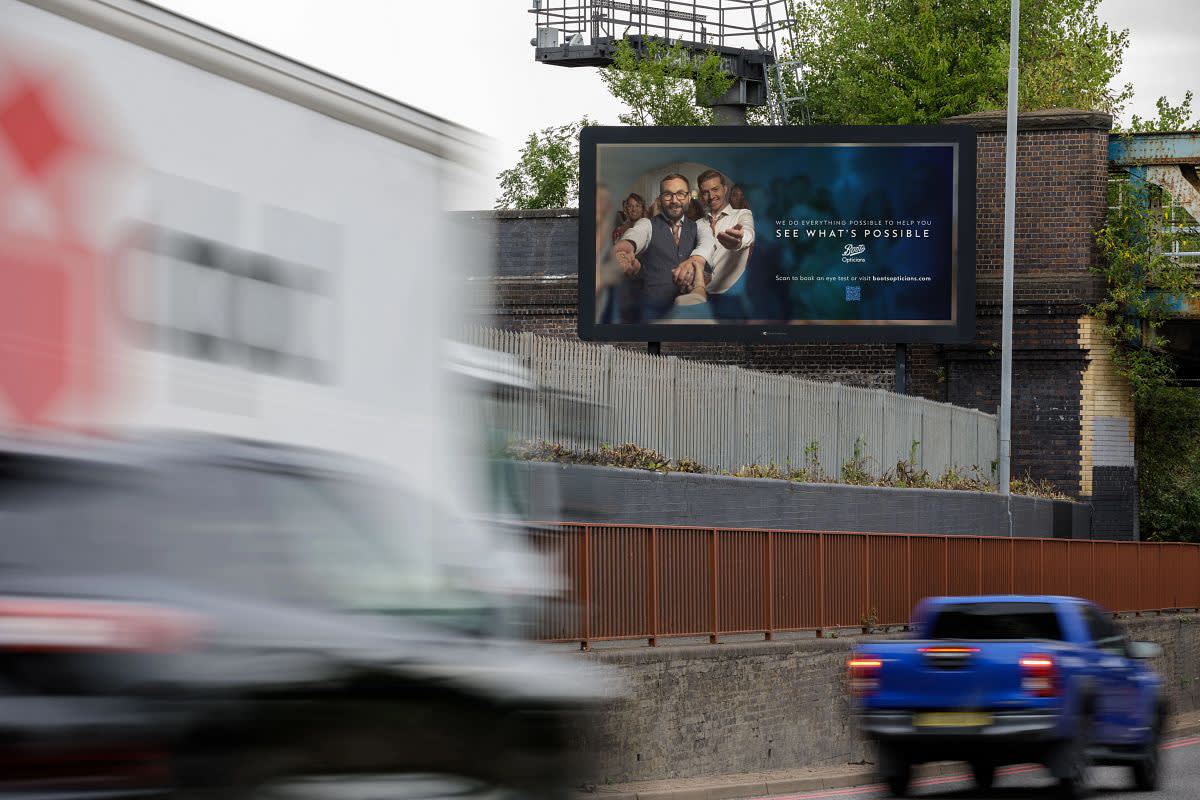One of the most exciting developments in the Out of Home advertising space over the past few years has been the rise of digital billboards. Their innovative displays and ability to provide real-time, contextual updates, means they’ve become a popular choice for businesses of all sizes.
Their relative newness means that you might not be aware of exactly what digital billboard advertising is or how it works, though. In this guide, we’ll look to change that.

What are digital billboards?
Digital billboards are attention-grabbing screens placed in public spaces which advertisers can use to promote their products or services. The screens are usually powered by LED or LCD bulbs, enabling digital content such as videos and animations to be displayed.
Digital billboards are an effective tool for the modern age. Companies can quickly adapt their advertisements to suit their marketing needs, refine their audience targeting and display real-time data.
What’s the difference between digital and traditional billboards?
While traditional billboards display static, printed advertisements, digital billboards use LED screens to display rotating images or videos. The key benefit of digital billboards versus traditional billboards is the ability to schedule and update content remotely.
Types of digital billboard
Digital billboards come in a few different forms, each with its own benefits. Here are some of the most common types of digital billboards:
Standard digital billboards – these are the bedrock of all Digital Out of Home infrastructure. They’re electronic displays with eye-catching video or image advertisements and are most often found in urban hotspots.
Interactive digital billboards – through the use of sensors and other technology, these billboards allow audiences to engage with advertisements in a new way. For example, facial detectors can recognise when a viewer is looking at a billboard and trigger a change in the creative.
3D digital billboards – combining multiple images of an object taken from different angles produces a 3D effect that really brings a digital billboard to life. Advertisers can have fun flexing their creative muscles and audiences enjoy an immersive experience.
Custom digital billboards – some digital billboards break the mould, offering a unique format that stands out from the crowd. Examples of this include our iconic Storm Cromination site, made up of six screens spanning 72m of one of London’s busiest commuter routes.

The advantages of digital billboard advertising
Digital billboard advertising offers brands a wealth of new opportunities. With such innovation comes plenty of unique advantages:
1. Heightened creativity
Digital billboards enable levels of creativity that traditional billboards simply can’t match. Features such as video, 3D effects, slow motion and AR make it easier to build imaginative campaigns that capture the attention of audiences.
2. Increased visibility
Most, if not all, digital billboards are placed in high-traffic locations where vast numbers of impressions can be gained. But on top of this, the medium benefits from specialist lighting that adapts to ensure the creative is visible and legible in all conditions.
3. Precision targeting
The same cameras and sensors that enable interactive features can also be used to refine audience targeting. Detecting the age, gender and even mood of viewers, these sensors allow advertisers to dynamically target their audiences with alternative messaging.

4. Affordability
With digital billboard advertising, there are no printing costs involved. Advertisers can also pick and choose when their creatives are displayed, meaning they don’t have to pay for a continuous run when they only want the evening time slot.
5. Flexibility
Programmatic OOH has changed the way brands buy and schedule their advertising. Less forward planning is required, and campaigns can often be taken from ideation to activation in a matter of hours. Once live, real-time updates ensure the opportunity for ongoing optimisation.
6. Improved contextual relevance
Digital billboards are connected to the internet, which means that live data can be displayed on screen or used to dictate which version of a creative is displayed. For example, an ad’s messaging can be programmed to change depending on whether it’s raining outside.

What size is a digital billboard?
The standard digital billboard size is 48-sheets, the same as traditional billboards. However, digital billboard specifications are usually provided in pixels. At Clear Channel, our digital billboard specs ask for 864 x 432px in a landscape format, but this might vary depending on the media owner.

How much does digital billboard advertising cost?
The cost of billboard advertising varies depending on a number of factors, and digital billboards are no exception. Everything from the location to the display period and even the time of year can affect what you might pay to advertise on a digital billboard.
That being said, the average cost of digital billboard advertising in the UK is in the region of £X for a continuous two-week slot. It’s important to bear in mind that a continuous run is not necessary and potentially not even beneficial, though. In this case, it’s likely that the actual cost would be far lower.
Start your digital billboard advertising campaign today
Now that you’re clear on what digital billboards are and what this exciting form of advertising has to offer, you might be wondering what the next steps are. Our team of experts are on hand to answer any questions that you have and discuss where you can go from here.
Kick off your campaign today by getting in touch.
Start your billboard campaign today
Interested in learning more about billboard advertising? Fill in our form and one of our team will be in contact shortly to answer your questions and get started on your next campaign.



